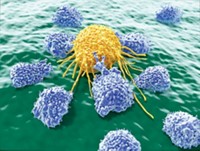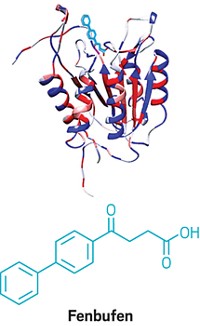Advertisement
Grab your lab coat. Let's get started
Welcome!
Welcome!
Create an account below to get 6 C&EN articles per month, receive newsletters and more - all free.
It seems this is your first time logging in online. Please enter the following information to continue.
As an ACS member you automatically get access to this site. All we need is few more details to create your reading experience.
Not you? Sign in with a different account.
Not you? Sign in with a different account.
ERROR 1
ERROR 1
ERROR 2
ERROR 2
ERROR 2
ERROR 2
ERROR 2
Password and Confirm password must match.
If you have an ACS member number, please enter it here so we can link this account to your membership. (optional)
ERROR 2
ACS values your privacy. By submitting your information, you are gaining access to C&EN and subscribing to our weekly newsletter. We use the information you provide to make your reading experience better, and we will never sell your data to third party members.
Drug Discovery
Small molecule activates key kinase
By boosting the activity of PI3Kα, the compound UCL-TRO-1938 spurs nerve regeneration in rats
by Bethany Halford
May 25, 2023
| A version of this story appeared in
Volume 101, Issue 17
For decades, scientists have fought cancer by developing small molecules to inhibit kinase enzymes. These enzymes play an important role in a host of cellular processes, including phosphorylation and cell signaling. Dampening them can counter malignant growth in cancer cells. But now, researchers report that using a small molecule to activate—rather than inhibit—phosphoinositide 3-kinase α (PI3Kα) can have beneficial effects. In animal studies, the activator compound, known as UCL-TRO-1938, regenerated damaged nerves and protected cardiac tissue from damage.
“In general, kinases do a lot of good things. So why are we always inhibiting them?” says Bart Vanhaesebroeck, a biologist at the University College London Cancer Institute who led the study. Vanhaesebroeck reasoned that if a small molecule that activates PI3Kα could be deployed topically or for short periods, it might be possible to take advantage of the kinase’s positive signaling properties without initiating its ability to spur cancer cells.
Vanhaesebroeck and coworkers teamed up with AstraZeneca to screen the drugmaker’s library of compounds for one that could activate PI3Kα. After making some molecular tweaks to one of their hits, they landed on UCL-TRO-1938. The molecule appears to wedge PI3Kα open so that it performs its function better. Tests in cells showed that UCL-TRO-1938 activated PI3K signaling, and studies in rodents showed that the molecule could stimulate nerve growth after injury and protect heart tissue after conditions simulating a heart attack (Nature 2023, DOI: 10.1038/s41586-023-05972-2).
David Fruman, an expert in PI3K biochemistry at the University of California, Irvine, who was not involved in the study, points out that even though there are hundreds of inhibitors of different forms of PI3K, very little attention has been paid to activators of these enzymes. “The compound described in this paper adds an important missing piece to the pharmacological toolkit for exploring PI3K biology, with potential medical applications in preventing tissue injury,” he says in an email.
Vanhaesebroeck tells C&EN he’s exploring commercialization of UCL-TRO-1938. But the main takeaway is that scientists shouldn’t shy away from activating kinases, he says. “People should be more open to this type of crazy idea.”





Join the conversation
Contact the reporter
Submit a Letter to the Editor for publication
Engage with us on Twitter